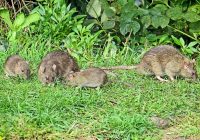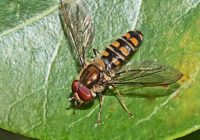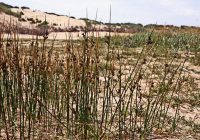Dr Phil Smith’s Wildlife Notes
January 2023
The Met Office tells us that January was marginally warmer than usual with roughly average rainfall. No records were set, which certainly makes a change. It rained in Formby on about 13 days, though the second half of the month was dry. Gales in mid-month were followed by a cold spell but no snow. Surprisingly, the sand-dune water-table rose by over 20 cm. Queen’s Jubilee Nature Trail, Southport was deeply flooded, including the Esplanade access road, while Marshside Nature Reserve looked more like the Lake District.
On 1st, a stroll round Cabin Hill National Nature Reserve revealed the seven English Longhorns grazing happily with the Herdwick sheep. The field to the east of the reserve had a small flock of Pink-footed Geese on harvested carrots, while 14 Stock Doves and 150 Redwings attracted attention. I really like Stock Doves, which are often overlooked, being superficially similar to the Domestic Pigeon. It seems to be one of the few farmland birds that isn’t in decline.
The following day, a flat-calm at Marshside Nature Reserve was unusual. About 60 Tufted Ducks, with a scattering of Wigeon and Pintail, were showing from the Hesketh Road viewing platform, while the watch-point overlooking Crossens Marsh produced Kestrel, Merlin, Marsh Harrier and a male Hen Harrier. Others had seen Sparrowhawk, Peregrine and Buzzard earlier, making a remarkable total of seven raptors. On 9th, I ambled around the Sands Lake board-walk in half a gale. The five young Mute Swans with their parents were looking quite healthy, despite being fed on little more than bread. Several Brown Rats were beneficiaries (photo courtesy P. Kinsella). A dozen Gadwall were sheltering on the lee side of the island, while the rattle of branches in the wind drowned out the traffic noise.
One of three events during the month, our windiest ever volunteer ‘Buckthorn Bash’ on 12th took place in a full gale. Despite the inclement conditions, 13 hardy volunteers turned up at Sands Lake, Ainsdale and, once we got working on the Sea Buckthorn, we didn’t notice the wind. The 15th dawned calmer but colder with sunny periods. Pete Kinsella emailed to say he found five species of hoverflies in Alexandra Park, Crosby. They included one I have never seen: the distinctively-marked Xanthandrus comtus, which rejoices in the vernacular name of Migrant Flatbelly, coined by Steven Falk. This is a scarce, strongly migratory hoverfly that is starting to winter in Britain.
On 25th, a 9.9m tide saw me at Hightown. However, high atmospheric pressure and light winds meant it didn’t come in as much as expected, so there was no dune erosion. The high-tide wader roost on the far side of the R. Alt was undisturbed for a change, an impressive 1150 Oystercatchers being one of my largest counts here. A wintering Chiffchaff called briefly from the edge of the Rifle Range. I enjoyed the peace and quiet of the Alt Estuary for a few moments, the only sounds being the distant calls of gulls and the gentle slap of waves on the beach.
Two days later, I called at Kenilworth Road, Ainsdale, to re-visit an area of relict dunes surrounded by housing. The southern section is part of the Sefton Coast SSSI but suffers from scrub invasion. Nevertheless, the fringing woodland has some interesting mostly non-native plants, including a single specimen of Greater Snowdrop that I found here in 2012. It was still there but the flowers had been attacked by slugs and ruined. However, all was not lost; the south-facing woodland edge, warmed by a weak sun, had at least 40 basking houseflies and a dozen bluebottles. There was even a brief glimpse of a Marmalade Hoverfly.
My appetite whetted, I thought I would check out the northern section of these dunes that are not SSSI but form part of a Local Wildlife Site. This area is even more invaded by scrub, especially Sea Buckthorn, White Poplar and Pink Snowberry. However, I noted south-facing patches of Ivy that could be good for insects next autumn. Even better was a shrub that I didn’t immediately recognise. It was Bay Laurus nobilis, a garden-escape not previously recorded on the Sefton Coast. The following day, Crossens Marsh provided exceptionally close views of 300 Wigeon and a few Black-tailed Godwits, while male Hen Harrier and Merlin again showed from the watch-point.
As in December, many of my walks in the dunes were to record management works being undertaken by various organisations. There has been nothing like it since the late 1990s and, at last, inroads are being made into the backlog of scrub clearance, though there is still much to do. Big machines, contracted by Dynamic Dunescapes, worked their way along the Green Beach taking out invasive Japanese Rose, leaving behind at least 20 large patches of bare sand. Meanwhile, Sefton Council’s Countryside Stewardship Higher Tier-funded staff, Sefton Woodlands Allotment Association and Merseyside Amphibian & Reptile Group volunteers began the daunting task of removing scrub from slacks south of Weld Road, Birkdale, part of the ‘Velvet Trail’. I asked if slack no. 33 could be prioritised, as it still had a patch of Baltic Rush that I photographed in 1986. I was delighted to find that the slack had been completely cleared of buckthorn and birch. Similar work is being done at Ainsdale’s Falklands Way dunes, Kenilworth Road and the Birkdale corridor between Hillside and Royal Birkdale Golf Courses. Sadly, a visit to Ravenmeols dunes to check out last winter’s scrapes on the National Trust estate was marred when I was attacked by six dogs, off-lead and uncontrolled; a most unpleasant experience but one that is not unique these days.






